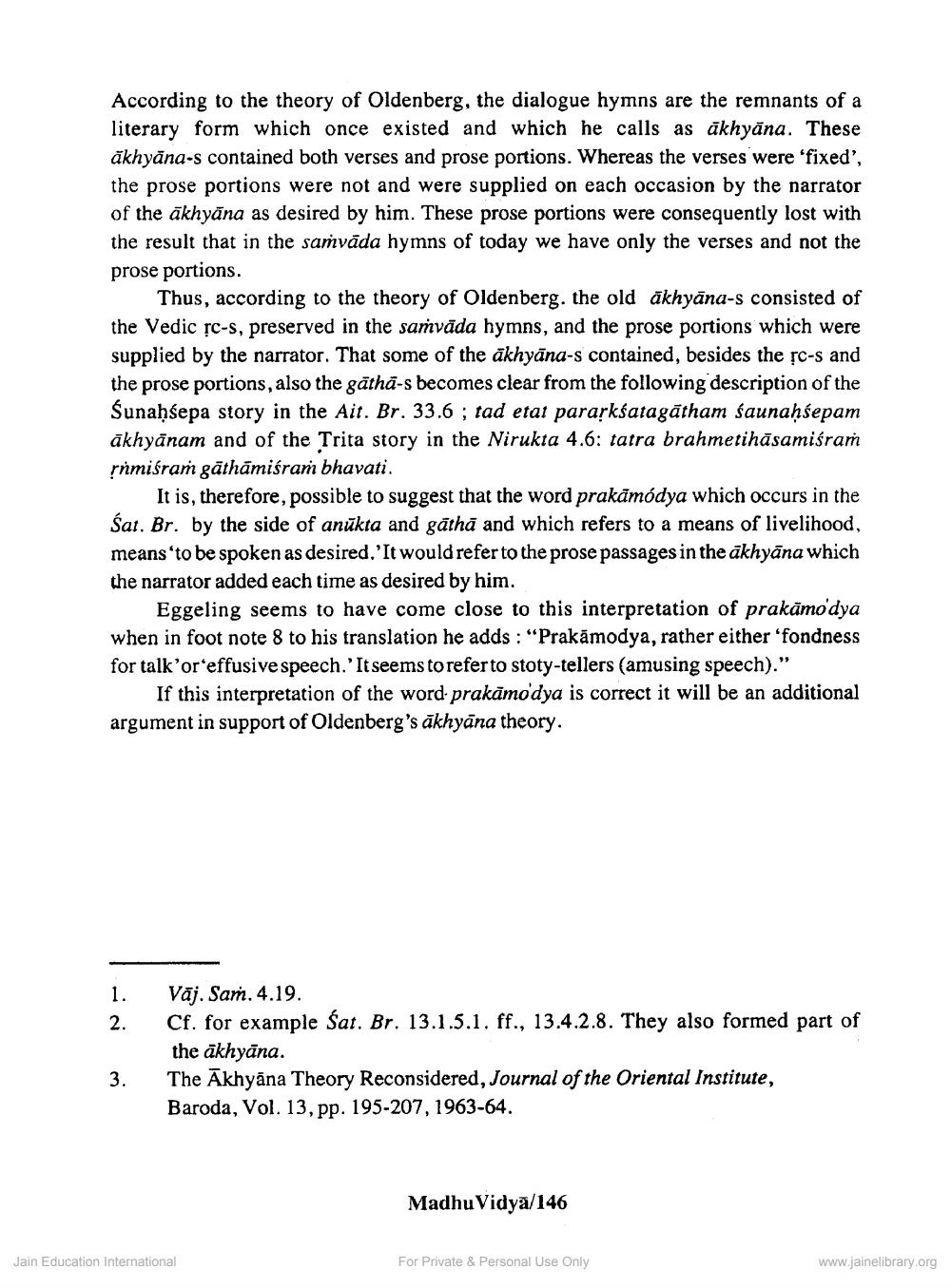________________
According to the theory of Oldenberg, the dialogue hymns are the remnants of a literary form which once existed and which he calls as ākhyāna. These ākhyāna-s contained both verses and prose portions. Whereas the verses were 'fixed', the prose portions were not and were supplied on each occasion by the narrator of the ākhyāna as desired by him. These prose portions were consequently lost with the result that in the samvāda hymns of today we have only the verses and not the prose portions.
Thus, according to the theory of Oldenberg. the old ākhyāna-s consisted of the Vedic șc-s, preserved in the samvāda hymns, and the prose portions which were supplied by the narrator. That some of the akhyāna-s contained, besides the sc-s and the prose portions, also the gātha-s becomes clear from the following description of the Sunahsepa story in the Ait. Br. 33.6 ; tad etat pararkśatagātham saunaḥsepam ākhyānam and of the Trita story in the Nirukta 4.6: tatra brahmetihāsamiśram rňmiśram gāthāmiśram bhavati.
It is, therefore, possible to suggest that the word prakāmódya which occurs in the Śat. Br. by the side of anūkta and gāthā and which refers to a means of livelihood, means to be spoken as desired, 'It would refer to the prose passages in the ākhyāna which the narrator added each time as desired by him.
Eggeling seems to have come close to this interpretation of prakāmo dya when in foot note 8 to his translation he adds : "Prakāmodya, rather either 'fondness for talk'or'effusive speech.' It seems to refer to stoty-tellers (amusing speech)."
If this interpretation of the word prakāmo dya is correct it will be an additional argument in support of Oldenberg's ākhyāna theory.
Vāj. Sam. 4.19. Cf. for example Sat. Br. 13.1.5.1. ff., 13.4.2.8. They also formed part of the ākhyāna. The Ākhyāna Theory Reconsidered, Journal of the Oriental Institute, Baroda, Vol. 13, pp. 195-207, 1963-64.
Madhu Vidya/146
Jain Education International
For Private & Personal Use Only
www.jainelibrary.org




